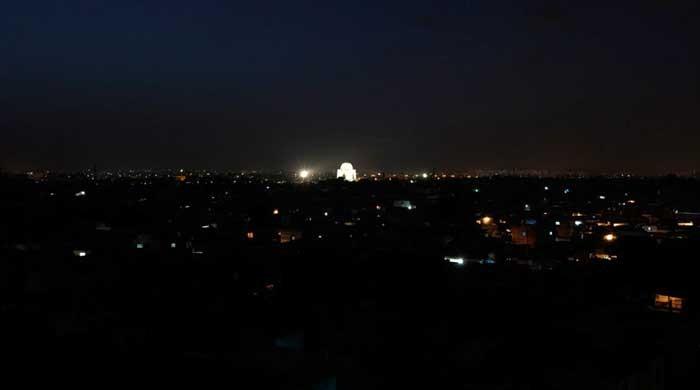Considering that there may be blackouts in areas of Europe, that have not experienced much of it in the past, this post tries to explore how the power grids are connected and how they work. Although Europe is the example, the structure of the grid would probably be similar in many other regions.
Protecting electronics with surge protectors and uninterrupted power supplies
Before getting into the details of the power grid and possible failures, one practical application is to know how one can attempt to protect one's computer and other electronics. In short, the common recommendation is to consider surge protectors and uninterrupted power supplies.
The power outage Wiki has:
Protecting computer systems from power outages[
edit]
Computer systems and other electronic devices containing logic circuitry are susceptible to data loss or hardware damage that can be caused by the sudden loss of power. These can include data networking equipment, video projectors, alarm systems as well as computers. To protect computer systems against this, the use of an
uninterruptible power supply or 'UPS' can provide a constant flow of electricity if a primary power supply becomes unavailable for a short period of time. To protect against surges (events where voltages increase for a few seconds), which can damage hardware when power is restored, a special device called a
surge protector that absorbs the excess voltage can be used.
One can also do a search using questions like:
How to prevent fried electronics?
How to protect computer from power surges?
How to protect computer from power fluctuation?
Etc.
Besides protectors, one can disconnect the equipment when not in use.
The power grids
The Wiki for the
Synchronous grid of Continental Europe explains:
The synchronous grid of Continental Europe (also known as Continental Synchronous Area; formerly known as the UCTE grid) is the largest
synchronous electrical grid (by connected power) in the world. It is interconnected as a single phase-locked 50 Hz
mains frequency electricity grid that supplies over 400 million customers in 24 countries, including most of the
European Union.
The above map is from Wittmann, Veronika & Arici, Elif & Meissner, D.. (2021).
The Nexus of World Electricity and Global Sustainable Development. Energies. 14. 5843. 10.3390/en14185843. In the same paper, there is a map of how the world is or could be connected. The reference given is: Liu, Z. Global Energy Interconnection; Elsevier: London, UK, 2015. [
CrossRef] The map is from 2015, but should give an idea:
The
Wiki lists the grid networks in Western Europe:
To give an idea of how the networks are connected,
Grid Map has a different map from January 1, 2019, where the first image shows cross border connections:
And with the national grids selected, more details of the network are visible:
The working of these large grids is explained in
Wide area synchronous grid
"In a synchronous grid, all the generators naturally lock together electrically and run at the same
frequency, and stay very nearly in phase with each other. For rotating generators, a local
governor regulates the driving torque, and helps maintain more or less constant speed as loading changes.
Droop speed control ensures that multiple parallel generators share load changes in proportion to their rating.
Generation and consumption must be balanced across the entire grid, because energy is consumed as it is produced. Energy is stored in the immediate short term by the rotational kinetic energy of the generators.
Small deviations from the nominal system frequency are very important in regulating individual generators and assessing the equilibrium of the grid as a whole.
When the grid is heavily loaded, the frequency slows, and governors adjust their generators so that more power is output (droop speed control). When the grid is lightly loaded the grid frequency runs above the nominal frequency, and this is taken as an indication by
Automatic Generation Control systems across the network that generators should reduce their output."
The Swiss power company, Swissgrid, has
a page that shows the power frequency related to time in the whole grid.
The frequency is just below 50 Hz, so there is a slightly higher load on the generators than the ideal situation. The total lack is 17 seconds, but compared to when I checked last evening, the system has gained 12 seconds.
The Swissgrid page explains the principles of monitoring the grid:
Wide Area Monitoring
The
Wide Area Monitoring platform allows grid operators to monitor the stability of grids across great distances. It connects metering stations throughout Europe: from Portugal to Turkey and from Denmark to Sicily.
Devices in the relevant substations at multiple locations in Europe measure the grid frequencies at synchronised times, calculate the frequency and deliver the associated data in real time. Swissgrid uses Wide Area Monitoring to constantly monitor the processes in the European electricity grid and to detect the direction in which the energy is flowing. This helps Swissgrid plan transport capacities and keep its domestic grid in equilibrium.
The need for the power producing companies to be flexible and the narrow limits within which they function, may force them to shut off a part of the grid, in case they can't meet the demands. So far, most of the time the can.
The
Wide area synchronous grid Wiki explains how this connectedness sometimes can lead to problems:
For timekeeping purposes, over the course of a day the operating frequency will be varied so as to balance out deviations and to prevent line-operated clocks from gaining or losing significant time by ensuring there are 4.32 million on 50 Hz, and 5.184 million cycles on 60 Hz systems each day.
This can, rarely, lead to problems.
In 2018 Kosovo used more power than it generated due to a row with Serbia, leading to the phase in the whole synchronous grid of Continental Europe lagging behind what it should have been. The frequency dropped to 49.996 Hz. Over time, this caused
synchronous electric clocks to become six minutes slow until the disagreement was resolved.
[4]
The example above may show that with a large grid there is a possibility of sharing, in both easy times and difficult times.
The Wiki on power outage covers a number of different scenarios and explains some reasons for the blackouts. There are also links to several major incidents. In the
2003 Italy blackout for instance they write:
Researchers in
physics and
complex networks have modelled the 2003 Italy blackout as a cascade of failures in interdependent networks. Several nodes in the network of power stations failed, causing a failure of the Internet communication network, which in turn caused a further breakdown of power stations. The goal of research was to understand how to build more robust networks.
[2]
Next is an example from the Wiki for the
2015 Turkey blackout. It shows how the power grid in one area may affect the functioning of the grid in another:
The
2015 Turkey blackout was a widespread
power outage that occurred in almost all parts of
Turkey in the morning of Tuesday, 31 March 2015.
[1]
Due to line maintenance on the main East-West corridor, which connects
hydropower rich Eastern Turkey with the population centers in Western Turkey, the remaining lines became overloaded after the Osmanca –
Kursunlu line tripped, as the system was not in a n-1 secure state.[
clarification needed] The
electric system in Turkey split in half at CET 09:36:11 and separated from the Central European (CE) synchronous zone, i.e. connecting lines to
Greece and
Bulgaria also tripped. This was the reason that the disturbances only had effects in Turkey and did not cascade to neighbouring countries.
The two parts inside Turkey behaved differently. The Western part suffered from a lack generation (21%) and
frequency went down.
Load shedding schemes did stabilize the frequency, but as some
power plants in Turkey did not cope with running at reduced frequency, additional power was lost and resulted in a blackout of the Western part. The Eastern part suffered from hydropower oversupply (41%) that wasn't able to flow westward.
[2][3] The Eastern part was accelerated by ca. 1.6
Hz/s and culminated at 52.3 Hz. Power plants tripped due to overfrequency and the initially oversupplied Eastern part collapsed at underfrequency values less than 47.0 Hz.
If you are interested to learn about still more power outages, there is a
list of major power outages.
Power outages/blackouts can be very disturbing, freezers may unfreeze, but also if the water pump is connected to the grid and the tap is left open when the water comes back on, it will begin to run. Sometimes there are secondary considerations to make when the power goes.








